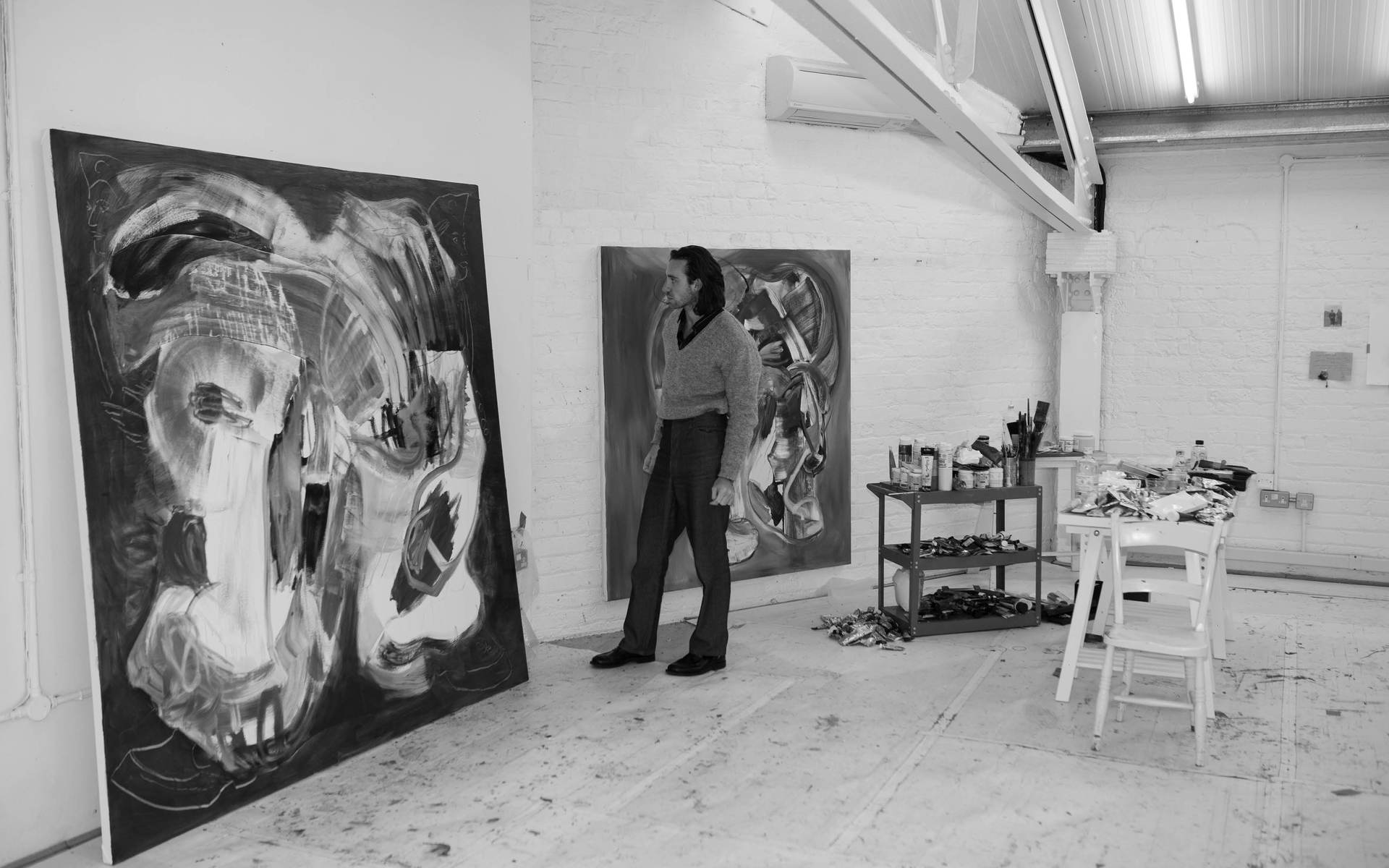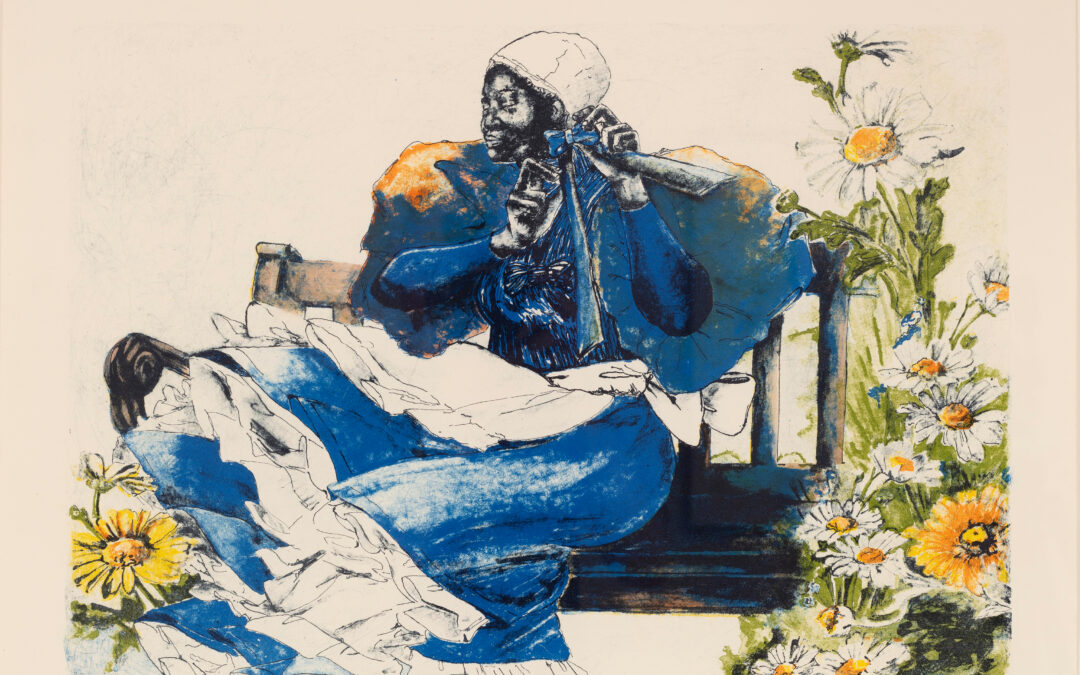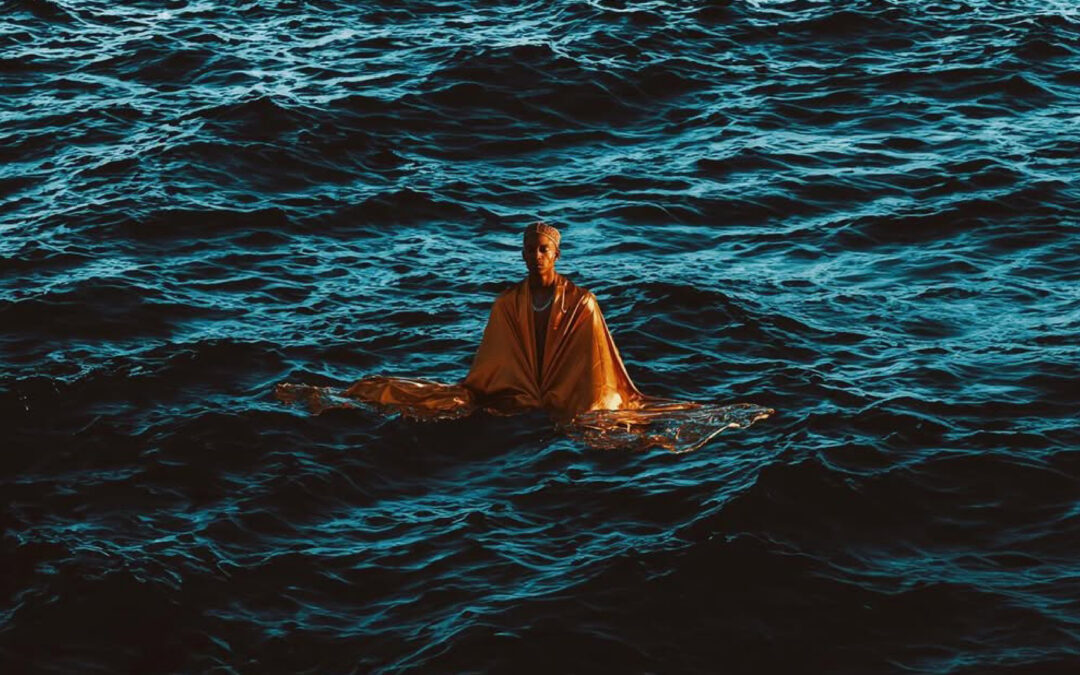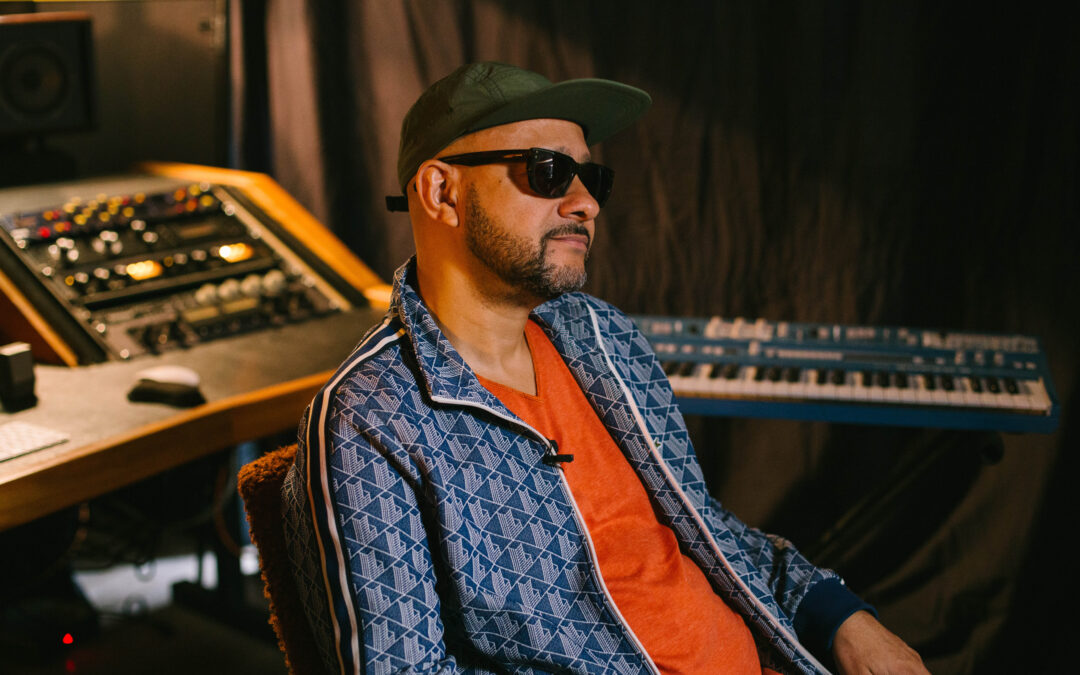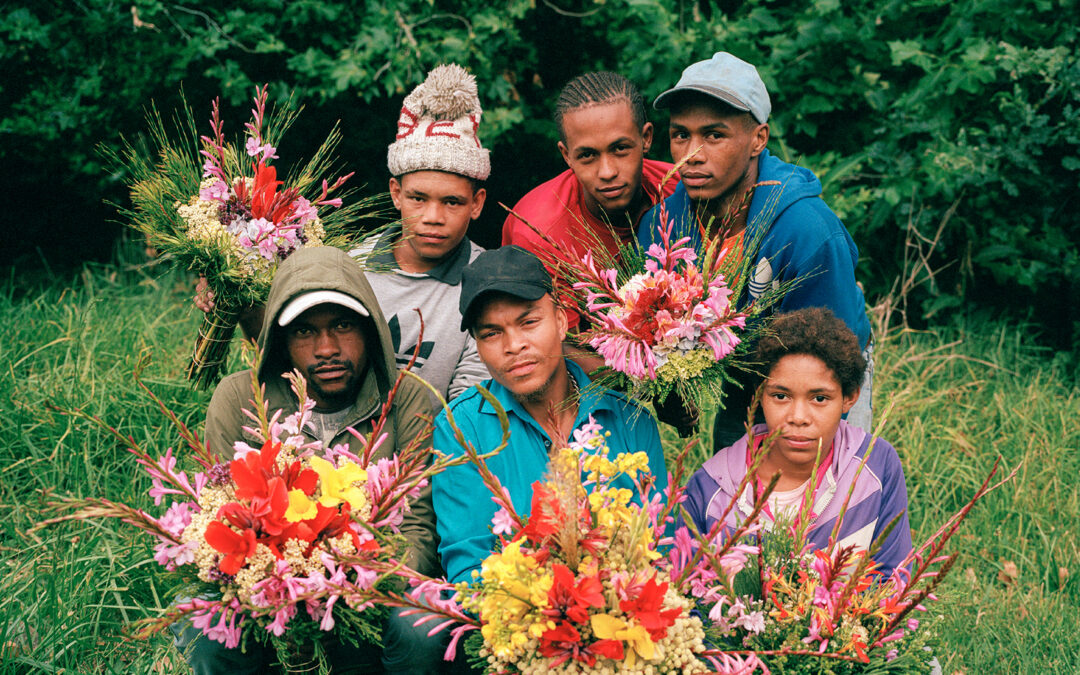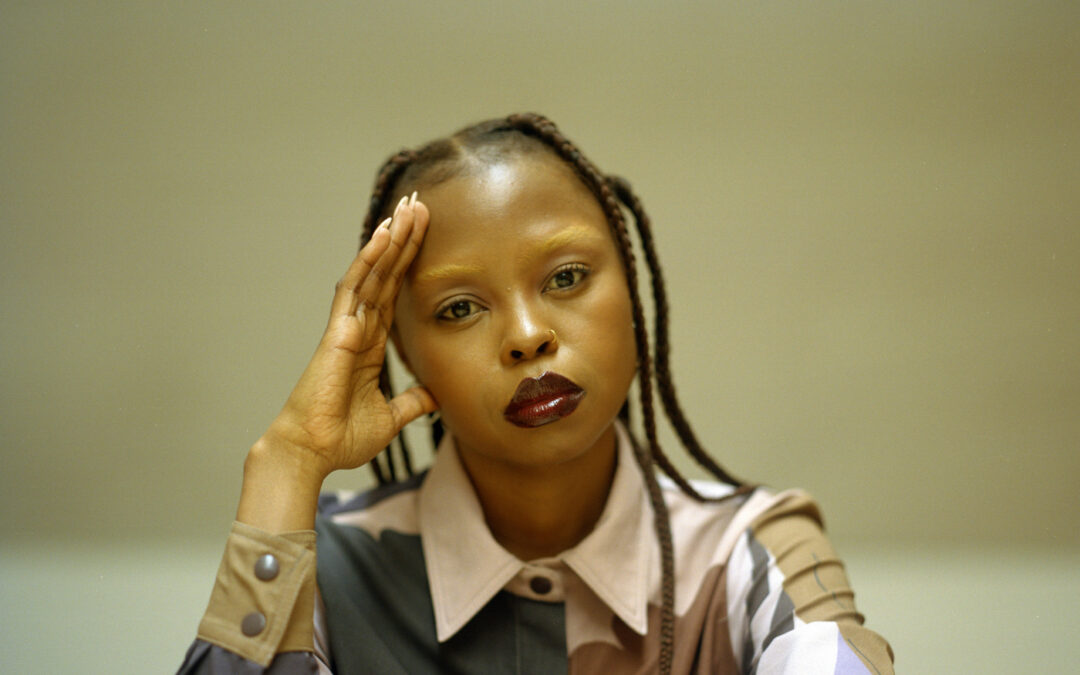It is not often that I get to interview someone for a second time, but it is a special thing to do, particularly in lieu of the transformative-driven nature of changing practices for artists and creatives. When Alexander James spent time in Cape Town two years ago, for a residency with THEFOURTH Gallery, our conversation focused on the immensely energising 60 piece outcome of his experience in a new studio, and time spent in a new city – and this ability to create up to 60 paintings, of varying sizes and visage, is an integral component of Alexander’s process; he is never not painting, or working on a painting, or archiving, documenting and journaling his surroundings as references for later paintings. This insatiable curiosity, and its subsequent thirst, are perhaps reasons as to why when I look at his work now, only two years later, there is an even deeper intensity of technique and characterisation. This is the gift of time and commitment to one’s process wrapped up together, and spread through the thread of Alexander’s vision as an artist.
Alexander’s thematic centre can be summed up by ‘memory’ – this subjective epitaph within the experience of being human is something he had begun to excavate during his residency in Cape Town, and continues to shape and inform the dialogue inherent in each body of work thereafter. In the Greek myths, the titan Mnemosyne (memory) was born from the union of Uranus (Sky) and Gaia (Earth) – she, among the twelve primordial children of creation, is one of the first experiential constructs ascribed with divinity, ranked in importance among the physical elements such as her sister Thea (light & the sun) or Oceanus (the sea & water) – this is how critical the role of memory has played in the perception of living itself, by ancient human beings. Mnemosyne would later go on to birth the nine Muses, and it is in this narrative that we see the inextricable and primaeval link between memory and the arts; and as such, for artists themselves. Art historian, Eleanor Stephenson, wrote of this connection with Alexander’s work and memory, likening his process to Frances A. Yate’s interrogation of ‘the method of loci’, as Eleanor describes “The basic principles of this mnemonic technique, described by Yates, involves imprinting upon one’s memory a series of ‘loci’ or places, usually architectural spaces, and within each room of this metaphysical space, an image of a memory. If one were to walk through the loci in their imagination, each place would activate an image representing a memory, thus producing a complex and ordered story which, in Cicero’s words, is tangibly akin to ‘a wax writing-tablet and the letters written on it’. The method of loci, and the historiography of memory more broadly, can be used to garner a deeper understanding of the concepts and visual language Alexander James has used in his recent body of work.”
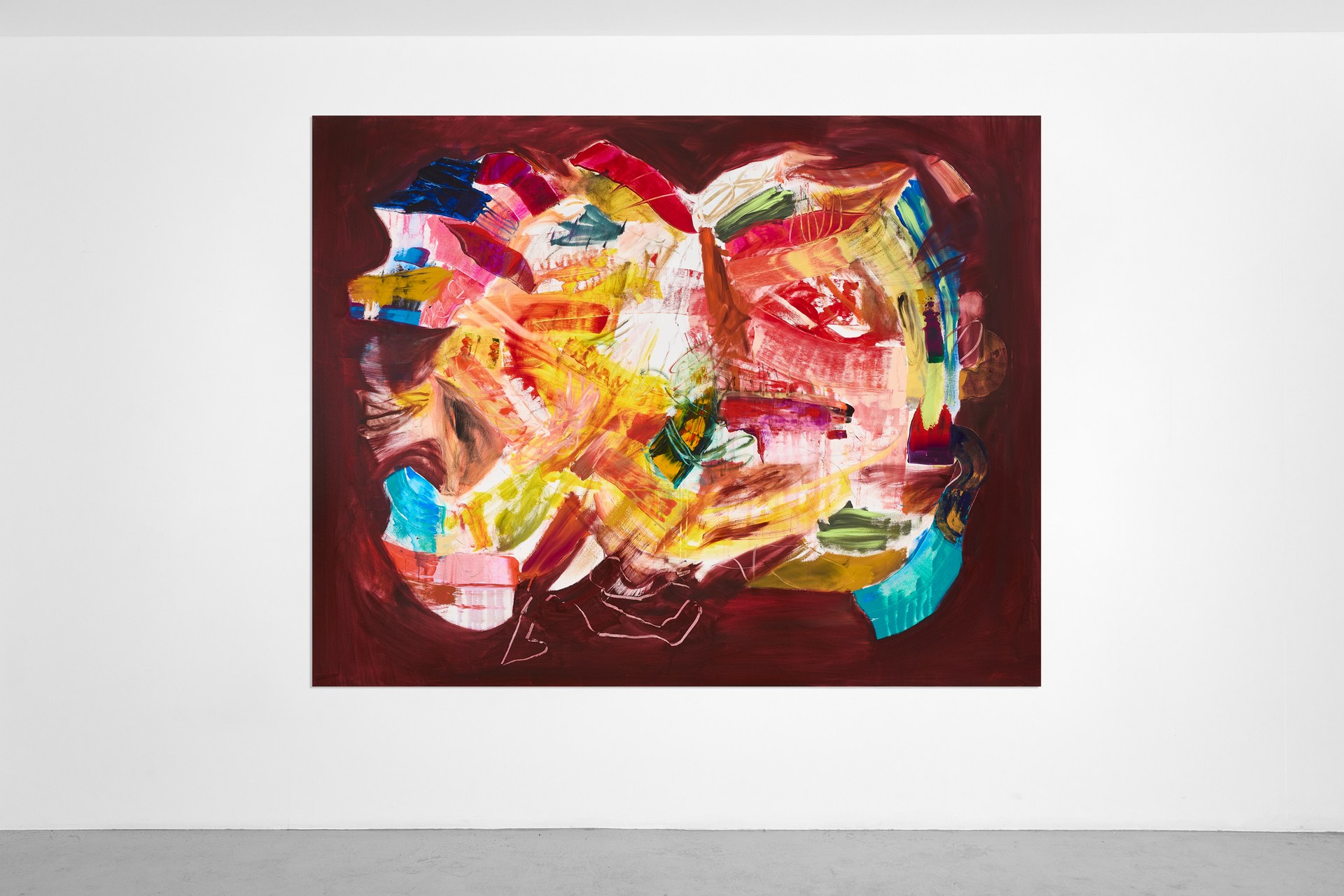
Alex James, Heartbeat, 2022, Oil on canvas, 180 x 240 cm.
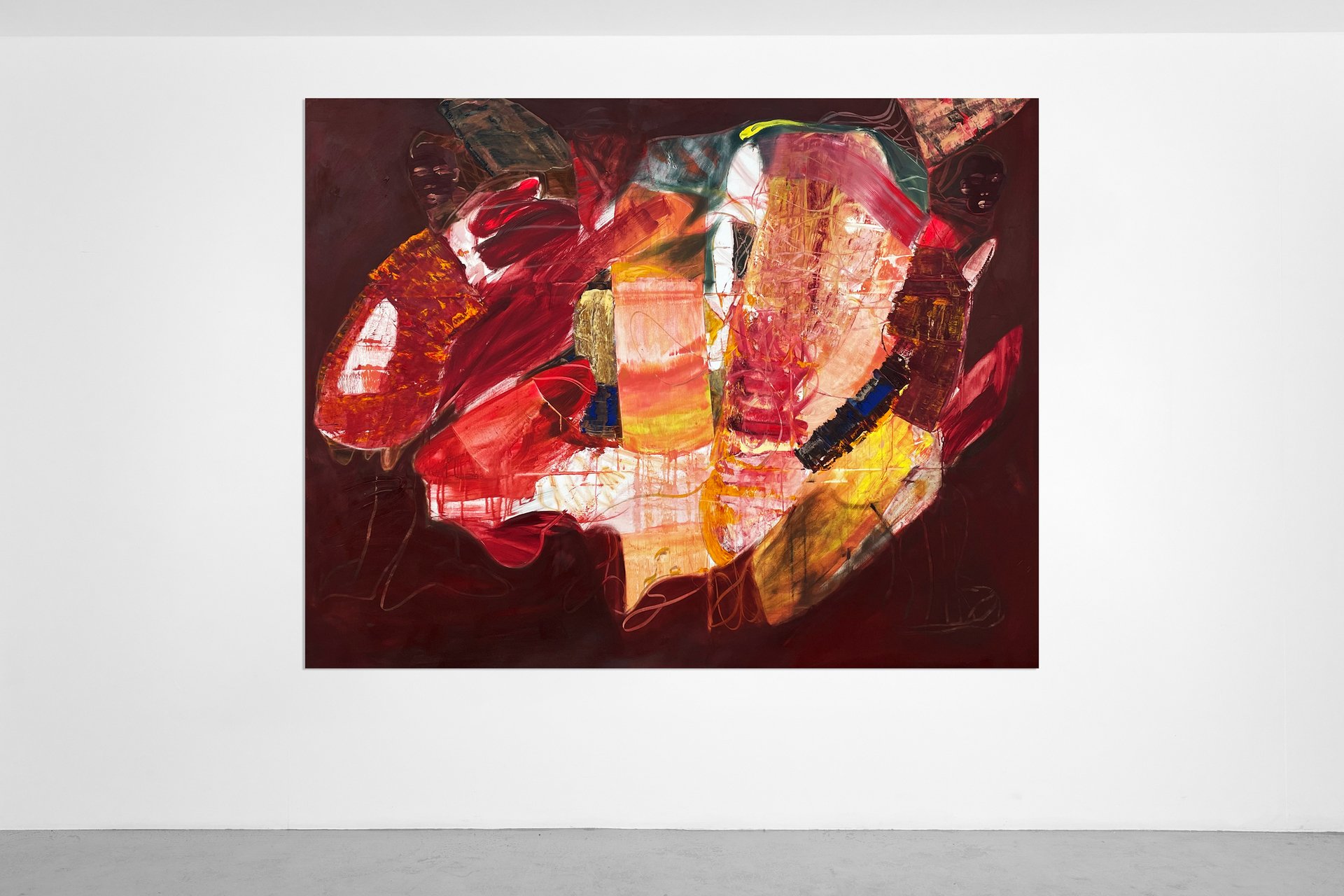
Alex James, King Cobra, 2022, Oil on canvas, 180 x 240 cm.
For Alexander, the family and lineage he was born into form an intrinsic portal through which he contextualises his work ,whether it’s those he knows, or family members he has heard stories of – this thread and web of human beings that maketh the remain critical, “memory is ever-evolving into my practice. It’s something I look at from a psychological perspective, but also in relation to my experience – and also a data perspective, too. I mean ‘data’ as information that has been passed down to me, and especially within my own lineage. I started this project in Cape Town, and when I moved back to London – it remained this very intricate part of how I work now, and I would say it’s at the forefront of what I do.” When Alexander’s show in Cape Town ‘Keep It In The Family’ showed, he had placed himself as the immediate observer of his experience – from childhood, and so forth – alongside family members. Now, in the more recent part of this mnemonic exploration, Alexander has begun to dig deeper, and further back, into realms of his familial context outside of his own memory. On this, he says, “my grandfather started opening up to me about his father, who I only met when I was very young – so I have no memory of him that I can recall. My great-grandfather moved from eastern europe to London during WW2, and about this salon called ‘Henry’s Gents Salon’, and he was this hungry, entrepreneur type character, and his space in east London became a kind of hot-spot for a lot creatives, who would roll in – like colourful characters, local gangsters, who even though they might not get their hair done, would hang around. This story began to open my eyes to this idea of memory beyond my own, which has its set of subjectivity and limitations, and into memory as a function of story-telling. It brought me to my grandfather as my primary source of research, who is 88 years old; and it’s amazing that he told me this information now, as it could have just ended up as untold stories, you know?”
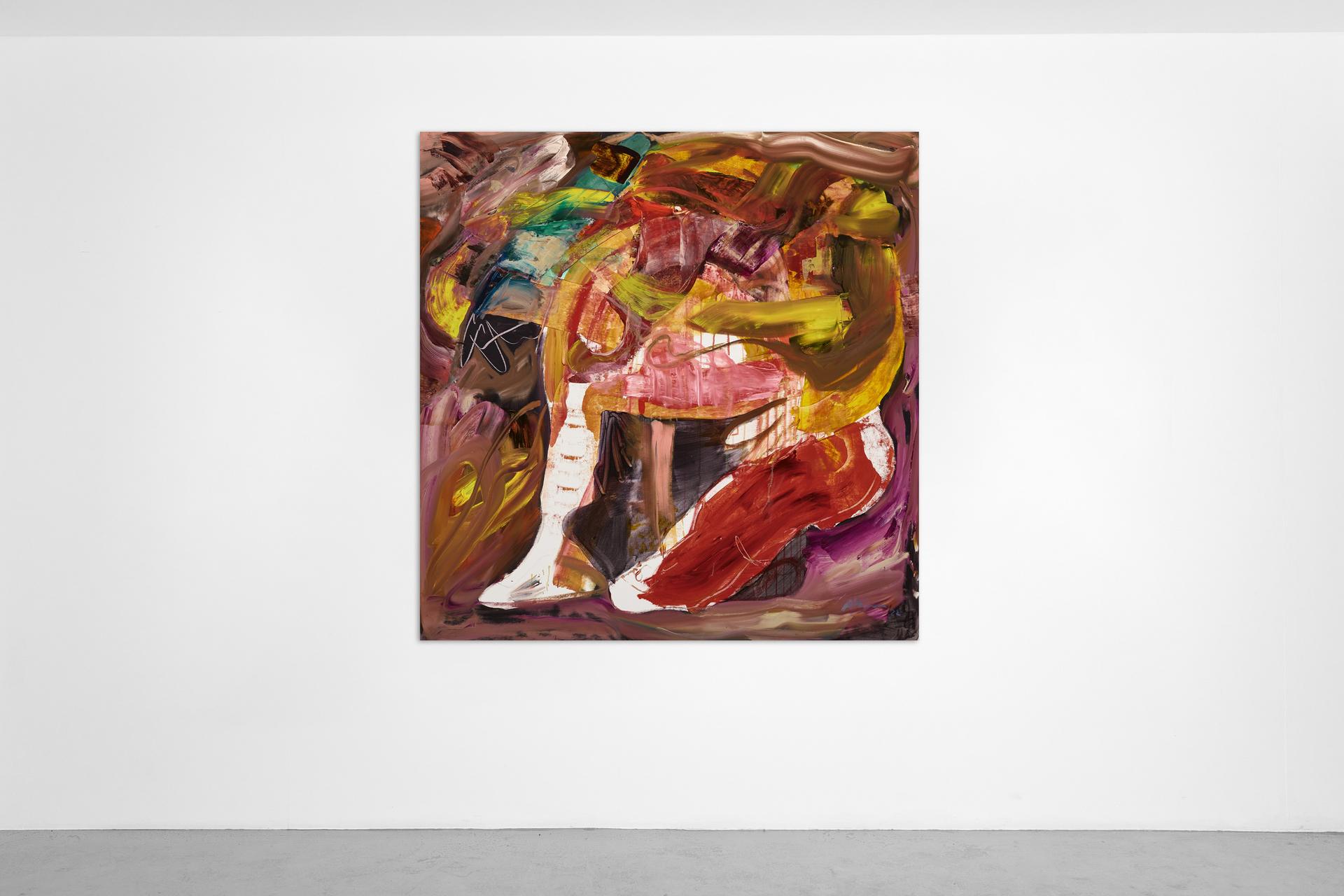
Anchor, 2022, Oil on canvas, 140 x 140 cm.

Dream Walker, 2022, Oil on canvas, 130 x 130 cm.
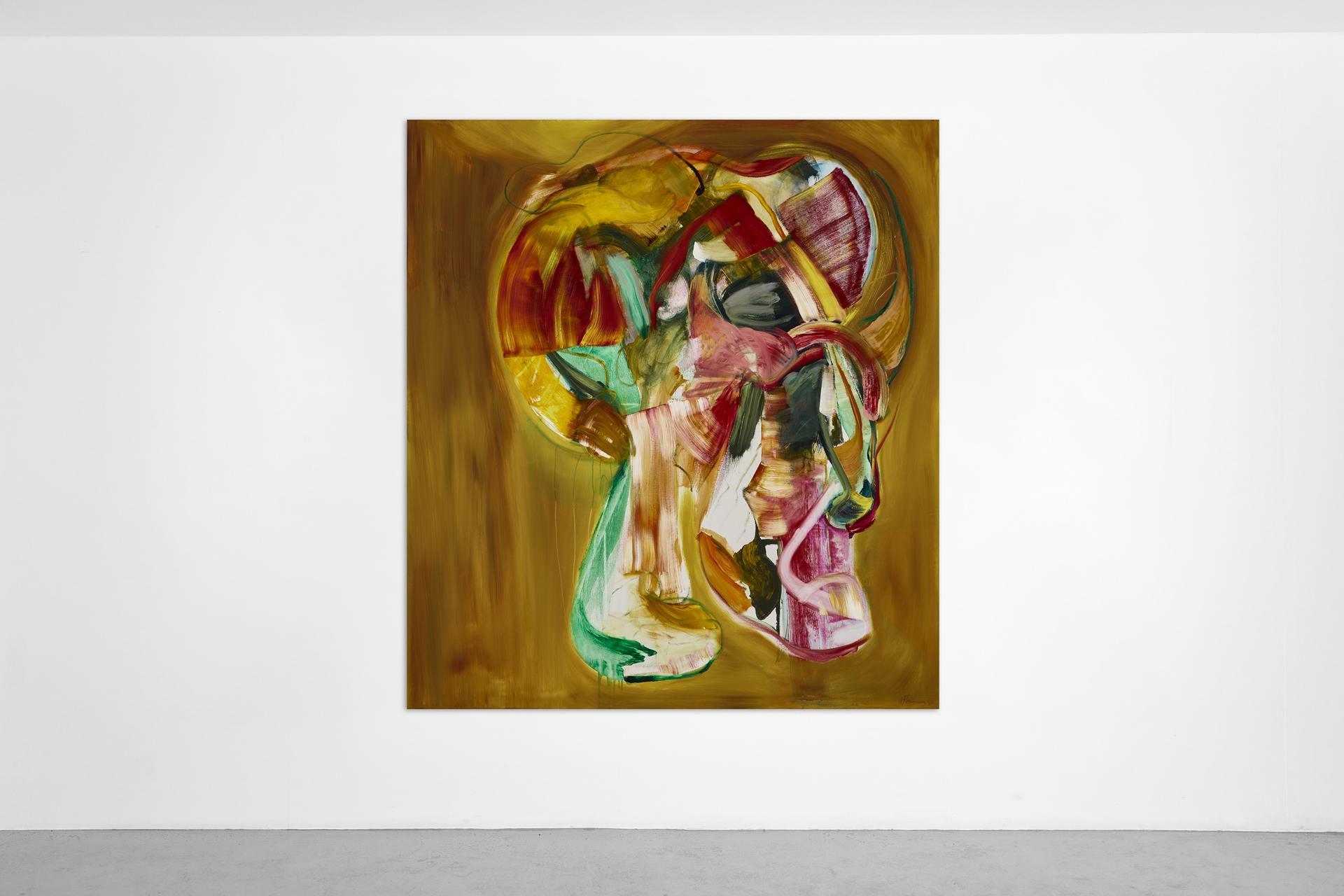
Frankenstein, 2022, Oil on canvas, 140 x 130 cm.
I ask Alexander what ‘family’ as a vehicle of memory has to come to mean for him in this moment of his career, to which he says, “I’m really interested in how family reveals ‘life before us’, before we come to be who we are, and how research can show more of who we are, but also where we come from. There are infinite moments that lent themselves to our own births or arrival in this world, and I find that fascinating. I think we all become consumed by the day-to-day details of our own lives, and in doing so we can forget to view the larger picture of what has led us to where we are. I also think this is why I am constantly screenshotting, taking pictures and observing my surroundings, wherever I am in the world – or looking at old photographs, or films, and finding references in whatever I can. I always want to be able to go back, and have an archive of my experience, and of the world as I saw it. It’s made me a lot more present in my everyday life to be observing and documenting whatever I can.” The orientation of detail in Alexander’s paintings originates from his research, and its outcome are some of the most rich, and colourfully hued edifications of memory I have seen in current contemporary art. I think of the violet-gazing portrait of ‘The Butterfly Effect’, or the figure emerging out of ‘Anchor’, bound by conflicting swathes of brush-strokes in a warm, kaleidoscope of shades. For Alexander, memory arrives on the canvas in tensions of subtlety (the figures) and passion (the colour) – all defined by the inimitable requirement of oil-based paint for patience. In how colour informs his work, Alexander explains, “A lot of my memory is tempered by colour and texture, so those two elements are crucial to my paintings. My work lies in between the realms of figuration and abstraction, and once I’ve decided what the narrative is going to be, I then leave colour and texture quite freely to happen as it happens. I really enjoy the movement of that, being able to remove and add as the painting unfolds. I’ve definitely become a lot more patient with myself – I’m not rushed to finish paintings, and I really allow myself to leave work for a week or two, to really sit on it.” Within this space of appreciation for the artistic process; Alexander finds his working meditation as an artist. The sacred space, or altar, of the studio is as he says, ‘a pleasure to go into, to switch off from everything’ – this propensity to work, to create, and to research define Alexander as one of the most exciting painters right now – a guardian of the tradition of painting itself in 2023 and beyond. With shows ahead in London and New York, I anticipate interview number three with Alex in a few years time, imagine what will be then?
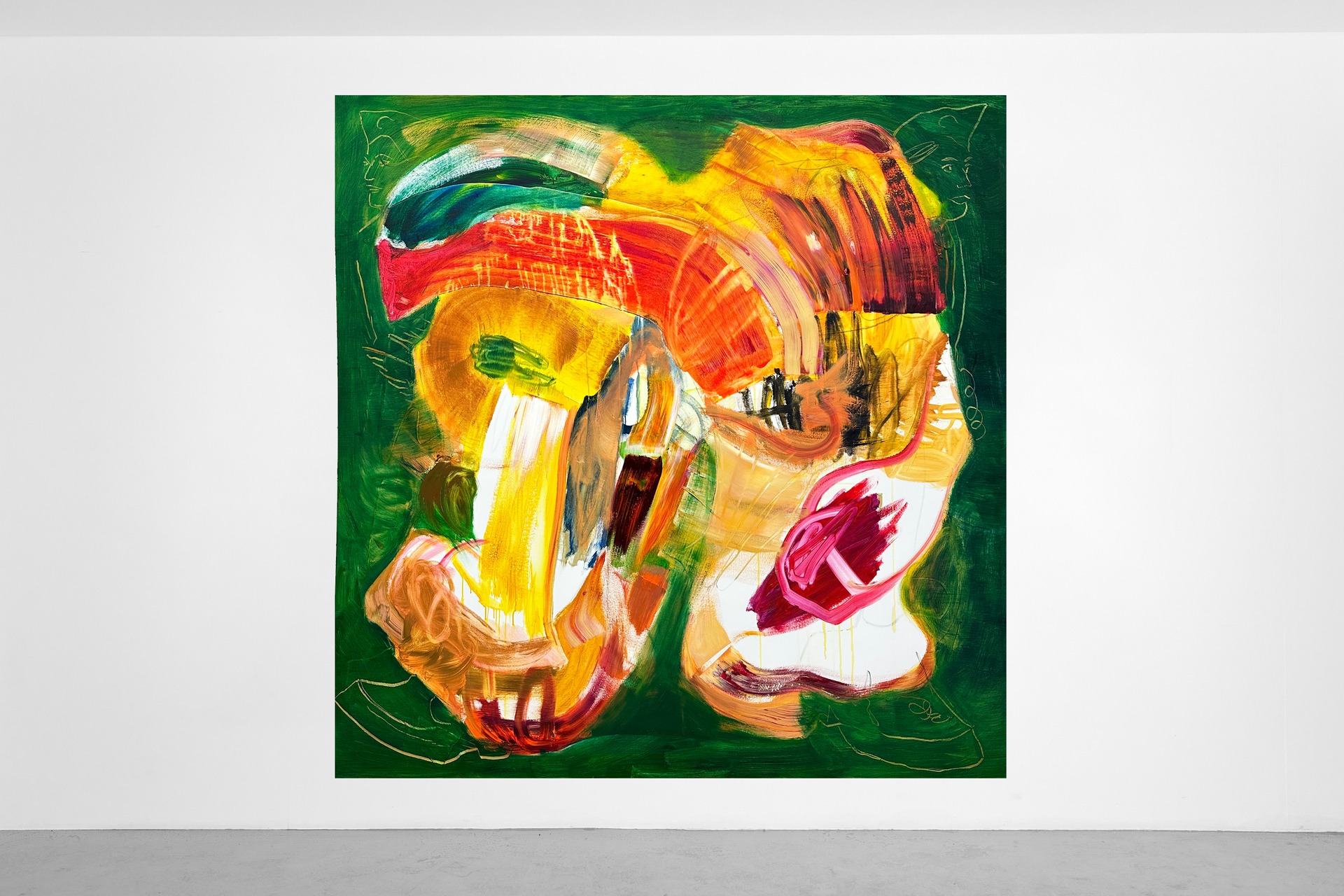
Left Foot Captain, Oil on canvas, 200 x 200 cm, 2022.
Featured Image by Brynley Odu Davies.
Written by: Holly Beaton

